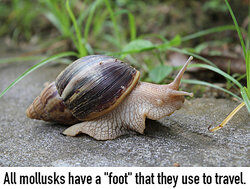
What is a homologous structure? It is an example of an organ or bone with similar underlying anatomical features found in different animals. These structures support the idea that the different animals descend from a common ancestor and serve as evidence of evolution.
In other words, these examples of homology occur when very different animals have bones or other structures that appear very similar in form but not in function. Meaning that, despite their outward differences, animals with homologous structures are somehow related.
Homologous Structures Humans Share With Animals
Here are some examples of homologous structures that humans share with other creatures from the animal kingdom.
- A dolphin's flipper, a bird's wing, a cat's leg, and a human arm are considered homologous structures. Whereas human beings have bones such as the humerus (upper arm), ulna and radius (forearm), carpals (wrist bones), metacarpals (hand bones), and phalanges (fingers), these features appear as similar bones in form in the other animals. Bats, whales, and many other animals have very similar homologous structures, demonstrating that these creatures all had a common ancestor.
- The tailbone in human beings is so-named because it is a homologous structure to the beginning of many animals' tails, such as monkeys. It is known as a "vestigial structure" because it is the last vestige of what was once a tail. This structure serves as evidence of having a common ancestor, one that would have had a tail.
- All mammals share the homologous structure of the vertebrae in common. For instance, in spite of its height, the giraffe has the very same number of neck bones (seven) as a giant whale and a tiny human being.
- Human beings, dogs, and cats all have similar pelvises, which are homologous structures to a vestigial pair of bones in snakes. These bones in snakes are the last remains of a pelvis, with no legs to attach.
- Human eyes are homologous to the eye bulbs which blind creatures who live in caves -- like cave fish -- have on their heads.
More Examples of Homologous Structures in Nature
You'll find commonalities within a diverse group of animals in the wild, whether on land, in the sea or in the air.
- All mollusks have a "foot" that they use to travel. This foot is homologous although it may not appear to be immediately. Closer inspection demonstrates that in terms of form and function, gastropods (like snails), cephalopods (like squid), and bivalves (like mussels) share this homologous structure in common.
- All organisms contain homologous plasma membranes with what is called a phospholipid bilayer.
- A homologous structure in the panda looks like a sixth appendage, but it is actually a modified wrist bone that helps the panda pick leaves off the trees more dexterously.
- An auditory bone that exists inside the ears of mammals is a homologous structure to a reptile's jawbone, including dinosaurs.
- Wasps and bees have stingers that they can use when they feel they are in danger. This is a homologous structure to the ovipositor of other organisms like insects and certain fish; the feature allows these organisms to lay eggs.
Analogous Structures Too
Now that you have seen these examples of homologous structures, you can observe many different examples in nature.
A related concept is the analogous structure. Whereas homologous structures point to a similar origin and a common ancestor, analogous structures are when animals have similar structures with similar function, but they evolved separately. Examples include the wings on butterflies, bats, and birds. They're all used to fly, but the animals are not directly related.
For more interesting insights into the animal kingdom, explore these Examples of Evolution too.